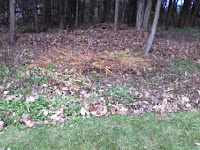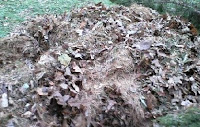 |
diycleanenergy.com
|
October's
snow storm delivered a few feet of wet snow, causing many people in
Pawling to lose electricity for an extended period. Because some of
these same electricity customers recently experienced and
extended outage after Hurricane Irene, friends and neighbors are
scrambling to install full house back-up generators. Wouldn't the $15,000 - $20,000 investment be more wisely spent
installing solar panels?
 |
venusconstruction.net
|
Installing
a set of solar panels is more sustainable and economical than
installing a back-up generator for the following reasons:
- Federal and state incentives make the cost of panels comparable to the cost of a full house generator. (See resources below.)
- The energy created by the solar panels cuts monthly electricity bill; eventually, the panels pay for themselves.
- Solar energy is silent. A neighbor has a large generator and the noise is deafening, I can't imagine what it will be like when all our neighbors have a generators running!
- Solar panels are powered by the sun—lessening dependence on fossil fuels. Generators are powered by fossil fuels.
- Full house generators often use natural gas; this increased demand will encourage the current push to hydrofrack in the Marcellus Shale—an environmentally unsustainable practice.
- Well designed systems enable customers to collect money from the electrical company when excess electricity is produced; the electrical meter, in essence, runs backwards. Generators do not generate money.
- Solar panels allow the home owner to be less dependent on the electrical grid, avoiding extended outages.
- One of the issues that keeps people from purchasing panels is the concern that they are not visually appealing, however, full house generators can also be eye-sores, because they're very difficult to hide.
- Solar panels do not pollute. Generators do.
- Solar panel installation supports the development of a green economy.Climate change will likely bring us more severe weather, causing more electrical outages. The decisions we make in our efforts to deal with this new reality can add to the problem, or become a part of the overall solution.Resources
- Estimate the cost of a solar energy system: http://nyserda.cleanpowerestimator.com/nyserda.htm
- "The New York State Energy Research and Development Authority (NYSERDA) "provides cash incentives for the installation by eligible installers of new grid-connected Solar Electric or Photovoltaic (PV) systems" http://www.nyserda.org/funding/2112pon.asp
- NY State tax incentive: Claim for Solar Energy System Equipment Credit http://www.tax.ny.gov/pdf/2010/fillin/inc/it255_2010_fill_in.pdf
- Federal
tax incentive: Residential
Energy Credits: http://www.irs.gov/pub/irs-pdf/f5695.pdf






